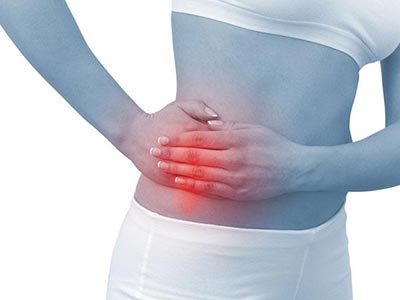
Appendix may have served some purpose in our ancestors but today very little is known about its function except for its limited role in the maintenance of our immune system and bacterial flora of the gut. Except for these two things it is of very limited use to us and we can even live a perfectly healthy life without it. It can, however, cause trouble for us, once it is inflamed, a condition termed as acute appendicitis.
Acute appendicitis is a very common disease. Every year, more than 200 000 new cases of acute appendicitis occur in the United States alone and it can affect people from every walk of life.
The incidence of acute appendicitis is found to be relatively low in African and Asian countries, however, in general, it is regarded as one of the leading causes of abdominal pain, accounting for a significant number of annual visits to the emergency department of a hospital.
An appendix is a finger-like pouch attached to the large gut. It has a lumen and is closed at both the ends. Any factor causing obstruction of this lumen will interfere with the blood flow to it and once the blood flow is compromised the tissues get inflamed and it starts to die resulting in all the manifestations of acute appendicitis along with complications occurring secondary to it.
Lymphoid Hyperplasia
An appendix contains lymphoid tissue. In response to infections of the GI tract as well as inflammatory conditions of the GIT such as Crohn’s disease and Ulcerative colitis, appendix starts producing more lymphoid cells as compared to the amount it produces normally. This hyperplasia of the lymphoid tissue blocks the lumen of the appendix, resulting in its inflammation.
Fecolith
Fecaloma (also called fecolith) refers to a hard mass made up of fecal matter that is stony in consistency. It can block the lumen of the appendix, again causing its inflammation.
Tumors
In elderly patients tumors such as carcinoma of the cecum can cause obstruction of the lumen of the appendix, resulting in acute appendicitis. This stands true, particularly for elderly patients.
According to pain management specialists, the most common presentation of acute appendicitis is abdominal pain. Initially, the pain is felt around the umbilicus or belly button in the form of a dull ache or a colicky pain. After some time the pain starts to shift to the right lower part of the abdomen. It may also be associated with a decreased appetite, nausea and even one or two episodes of vomiting at times.
In rare cases, acute appendicitis can also present in the form of abdominal pain accompanied by diarrhea or an increased frequency of urination. This occurs particularly when the appendix is present at a different location as compared to its normal location in the abdomen.
If you suspect you may have acute appendicitis, come to Century Medical and Dental Center (Downtown Brooklyn, Gravesend, Flatbush, Fort Greene and Midtown Manhattan) and speak with one of our specialists today.
SHARE THIS POST Page Updated on Apr 10, 2025 by Dr. Dvorkina (Primary Care Doctor) of Century Medical & Dental CenterCentury Medical and Dental Center is an accredited healthcare facility in NY that operates in accordance with Article 28, a public health law. This law regulates and recognizes accreditation for public healthcare facilities, ensuring they are licensed and operated correctly. By undergoing the Article 28 process and achieving accreditation, Century Medical and Dental Center demonstrates its commitment to meeting the highest standards of care.
As a multidisciplinary medical center, we have highly qualified doctors, nurses, and support staff who are working hard to provide the best medical care to patients in Midtown Manhattan, NY, Downtown Brooklyn, NY, including Brooklyn Heights, Dumbo, Prospect Heights, Park Slope, Clinton Hill, Boerum Hill, Red Hook, Harlem, Gravesneck, Flatbush, and Bedford-Stuyvesant.